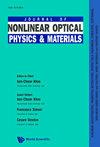Tuning the spin texture of graphene with size-specific Cu n clusters: a first-principles study
IF 2.3
4区 物理与天体物理
Q2 OPTICS
引用次数: 0
Abstract
The size dependent interaction of Cu n (n = 1‒5) clusters with pristine and defective (C-vacancy) graphene is studied by employing density functional theory. The computed binding energies are in the range of ∼0.5 eV for pristine graphene and ∼3.5 eV for defective graphene, indicating a much stronger interaction in the later system. The induced spin–orbit coupling interaction, due to the proximity of the Cu n cluster, is studied with non-collinear spin-polarized simulations. The clusters cause a spin splitting in the order of few meV. The resultant low energy bands spin textures are also computed, and a spin–valley coupling in the case of even atom clusters on pristine graphene is predicted, leading to the emergence of a spin lifetime anisotropy. For defective graphene, a complete out-of-plane spin texture and a large spin splitting of 40–100 meV is obtained for Cu n (n = 1, 2, 3, 5) clusters due to local magnetic moment. On the other hand, for Cu4/defective graphene, having no net magnetic moment, the spin–valley coupling prevails close to the band edges.用特定尺寸的Cu n团簇调整石墨烯的自旋结构:第一性原理研究
利用密度泛函理论研究了Cu n (n = 1-5)团簇与原始和缺陷(c -空位)石墨烯的尺寸依赖相互作用。计算得到的原始石墨烯的结合能在~ 0.5 eV,缺陷石墨烯的结合能在~ 3.5 eV,表明在后期系统中有更强的相互作用。利用非共线自旋极化模拟研究了Cu - n簇邻近引起的自旋-轨道耦合相互作用。这些团簇引起了几个meV量级的自旋分裂。由此产生的低能带自旋织构也进行了计算,并预测了原始石墨烯上均匀原子团簇情况下的自旋谷耦合,导致自旋寿命各向异性的出现。对于缺陷石墨烯,由于局部磁矩的作用,Cu n (n = 1,2,3,5)团簇获得了完整的面外自旋织构和40-100 meV的大自旋分裂。另一方面,对于Cu4/缺陷石墨烯,没有净磁矩,自旋谷耦合在带边缘附近盛行。
本文章由计算机程序翻译,如有差异,请以英文原文为准。
求助全文
约1分钟内获得全文
求助全文
来源期刊
CiteScore
3.00
自引率
48.10%
发文量
53
审稿时长
3 months
期刊介绍:
This journal is devoted to the rapidly advancing research and development in the field of nonlinear interactions of light with matter. Topics of interest include, but are not limited to, nonlinear optical materials, metamaterials and plasmonics, nano-photonic structures, stimulated scatterings, harmonic generations, wave mixing, real time holography, guided waves and solitons, bistabilities, instabilities and nonlinear dynamics, and their applications in laser and coherent lightwave amplification, guiding, switching, modulation, communication and information processing. Original papers, comprehensive reviews and rapid communications reporting original theories and observations are sought for in these and related areas. This journal will also publish proceedings of important international meetings and workshops. It is intended for graduate students, scientists and researchers in academic, industrial and government research institutions.

 求助内容:
求助内容: 应助结果提醒方式:
应助结果提醒方式:


